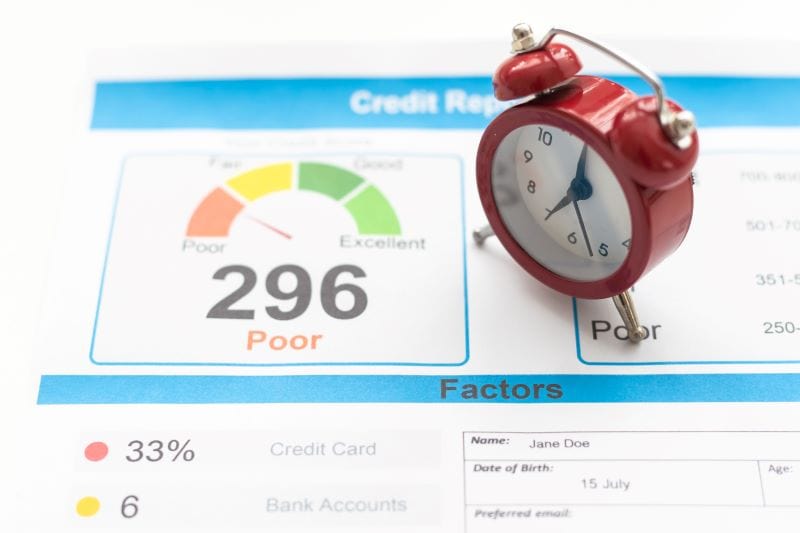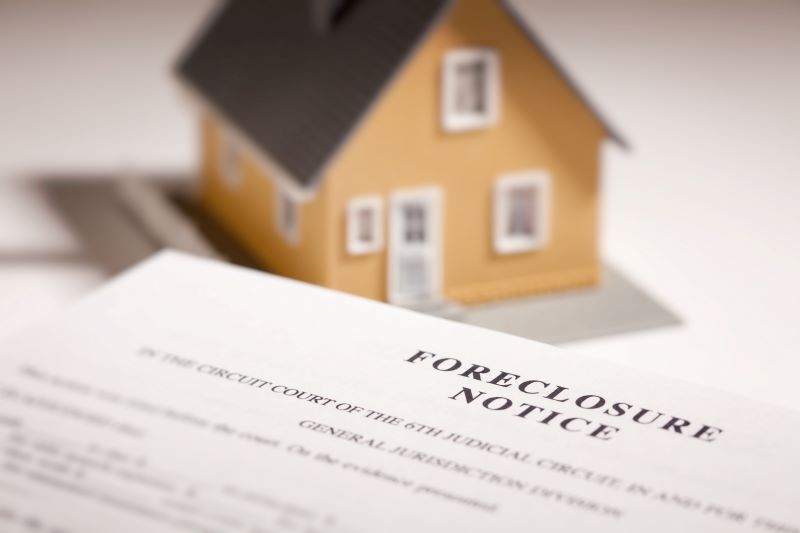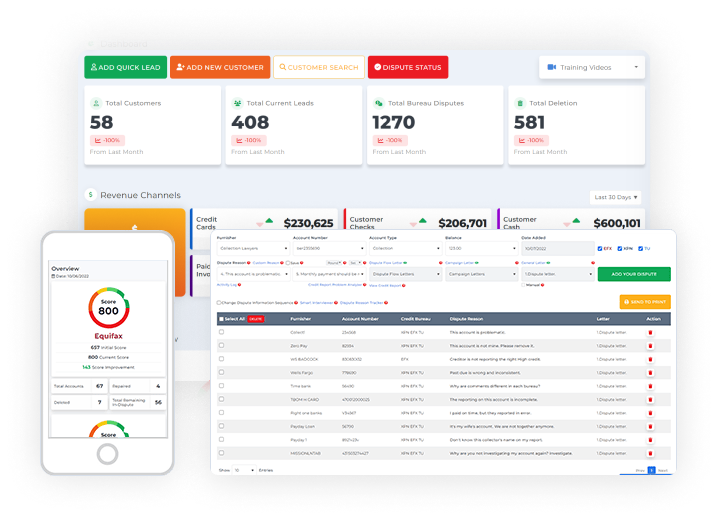When you face foreclosure, the first question that often arises is: How long does foreclosure stay on my credit report? This concern is common among individuals who are dealing with the financial and emotional stress of losing their home. Foreclosure is a significant event that can have long-term consequences for your credit. However, while it remains on your report for several years, there are steps you can take to rebuild your credit after foreclosure.
This guide will answer all your pressing questions about foreclosure’s impact on your credit, such as how long does it take for a foreclosure to complete, how long it stays on your credit report, and how you can recover. We will provide a clear, step-by-step plan to help you rebuild your credit and achieve financial stability again.
Start Today and Explore the Features Firsthand!
Table of Contents
What is Foreclosure, and Why Does it Show Up on Your Credit Report?
A foreclosure on credit report occurs when a homeowner cannot meet their mortgage payments, leading the lender to seize the property. This financial event is recorded on your credit report as a major derogatory mark, signaling to future lenders that you failed to meet your loan obligations. A foreclosure has a substantial and long-lasting impact on your credit score, making it harder to secure future credit.
Why Foreclosure Affects Your Credit So Severely?
A foreclosure signals to potential creditors that you are a high-risk borrower. Since you defaulted on a major financial obligation, such as a mortgage, your credit score can drop by 100 to 200 points, depending on where your score started. This significant decrease makes it harder to obtain new loans, credit cards, or even favorable interest rates after foreclosure. A foreclosure on credit report remains a serious negative mark, but there are ways to lessen its long-term effects.
Understanding the Foreclosure Process and Its Timeline
The foreclosure process typically starts after you miss a few mortgage payments. It is crucial to understand each step to navigate the legal and financial consequences better. How long does foreclosure take? This depends on your state’s laws and the lender’s actions. The entire process can last anywhere from several months to over a year. By understanding these steps, you can take better control of your financial future and possibly avoid foreclosure altogether.
How Long Does a Foreclosure Take?

The length of the foreclosure process can vary significantly depending on the state and lender. Most foreclosures don’t happen overnight, and it usually takes several months from the first missed payment to the final eviction. Understanding how long it takes for a foreclosure to complete is essential for preparing yourself financially and emotionally.
Pre-Foreclosure: Initial Missed Payments and Default Notices
Pre-foreclosure starts when you miss your mortgage payments, usually after two or three missed payments. Once you fall behind, the lender will issue a notice of default, alerting you that foreclosure proceedings may begin if you don’t catch up on payments. This stage can last between 30 to 90 days, giving you time to negotiate or catch up on missed payments. During this phase, how long does foreclosure take often depends on your ability to work with your lender to avoid further action.
Start Today and Explore the Features Firsthand!
Foreclosure Filing: Legal Action by the Lender
If missed payments are not resolved, the lender will file for foreclosure, initiating the legal process to reclaim the property. The time it takes to move from filing to foreclosure can vary by state, with judicial foreclosures (court-supervised) often taking longer than non-judicial foreclosures. On average, how long does it take for a foreclosure depends on the state, but it generally takes several months to over a year for this process to finalize. Once filed, the property may be auctioned off to recover the lender’s losses.
Post-Foreclosure: Eviction and Property Sale
After the foreclosure is finalized, you will be required to vacate the property. The lender will attempt to sell the home at auction to recoup the remaining balance of the mortgage. If the sale doesn’t cover the full amount owed, you may still be responsible for the difference through a deficiency judgment. At this stage, how long a foreclosure remains on your credit report begins to matter as the foreclosure gets reported, typically leading to a significant drop in your credit score.
How Long Does a Foreclosure Remain on Your Credit Report?

A foreclosure can remain on your credit report for up to seven years from the date of your first missed payment. This timeline is mandated by the Fair Credit Reporting Act (FCRA), which governs how long negative information stays on your credit report. The most common question people ask is, how long does a foreclosure remain on your credit report? The answer is seven years, but the good news is that its impact lessens over time.
The First Two Years: The Heaviest Credit Impact
In the first two years after a foreclosure, your credit score experiences the most significant hit, with the potential to drop 100 to 200 points. During this period, securing new loans or credit cards can be difficult, and if approved, the terms are often unfavorable.
How long does a foreclosure remain on your credit report may seem like a daunting question, but you can begin rebuilding your credit by making on-time payments and adopting positive financial habits.
Three to Five Years: The Impact Fades Gradually
After three years, the foreclosure still remains on your credit report but has a reduced impact on your credit score. While lenders still see the foreclosure, you might notice slight improvements in your score if you have maintained good financial habits. This period is crucial for demonstrating responsible credit use, which can help improve your creditworthiness.
Understanding how long a foreclosure stays on your credit report helps you plan your long-term credit recovery strategy.
Six to Seven Years: The Foreclosure Falls Off Your Report
By years six and seven, the foreclosure has much less influence on your credit score. Once the seven-year mark hits, the foreclosure is automatically removed from your credit report. This milestone significantly improves your credit score, assuming you’ve kept a clean credit record since the foreclosure.
Once it’s removed, your credit score can begin to recover more rapidly. After learning how long a foreclosure stays on your credit report, you can better strategize for the future.
Can You Remove a Foreclosure from Your Credit Report Early?
Removing a foreclosure from your credit report before the seven-year mark is difficult but possible in some cases. If you can dispute errors or negotiate with your lender, early removal may be achievable. While not guaranteed, this process can help improve your credit score sooner.
Disputing Inaccuracies on Your Credit Report
If the foreclosure entry on your credit report contains inaccurate information, such as wrong dates or incorrect balances, you can file a dispute with the credit bureaus. The bureaus are legally required to investigate your claim and respond within 30 days. Correcting errors related to foreclosure on credit report can help remove or update the foreclosure entry, leading to potential score improvements.
Start Today and Explore the Features Firsthand!
Writing a Goodwill Letter to Your Lender

A goodwill letter is a written appeal to your lender, asking them to remove the foreclosure from your credit report due to hardship. If your foreclosure was caused by a specific life event, such as a medical emergency or job loss, explain this in your letter and provide evidence of recovery. While lenders are not required to remove the entry, some may agree as a goodwill gesture if you’ve demonstrated improved financial responsibility.
Negotiating Foreclosure Removal in Settlements
In rare cases, foreclosure removal can be part of a legal settlement with the lender. If the foreclosure process was mishandled or if the lender made administrative errors, they may agree to remove the foreclosure from your credit report. This approach requires legal assistance but can be an effective strategy for early removal. By negotiating with the lender, you may reduce how long a foreclosure stays on your credit report and recover faster.
How to Rebuild Credit After Foreclosure?
Rebuilding your credit after foreclosure is essential to improving your financial future. While a foreclosure on credit report is damaging, it is possible to recover with a focused plan. Follow these steps to rebuild your credit and regain financial stability.
Step #1: Review Your Credit Report for Errors
Start by obtaining your credit reports from the three major credit bureaus—Equifax, Experian, and TransUnion. Carefully review each report for inaccuracies, such as incorrect dates or outstanding debts that have been paid off.
Disputing these errors can help improve your score. After a foreclosure, it’s important to ensure that your foreclosure on credit report is accurate to avoid unnecessary damage.
Step #2: Focus on On-Time Payments
Payment history makes up 35% of your credit score, making on-time payments crucial to recovery. Consider setting up automatic payments or reminders to avoid missing any payments. Even one late payment can hurt your progress and slow your recovery. By paying all your bills on time, you show lenders that you are serious about rebuilding your credit after foreclosure.
Step #3: Use a Secured Credit Card
A secured credit card is an excellent way to start rebuilding credit after a foreclosure. Unlike regular credit cards, secured cards require a cash deposit, which acts as your credit limit. Use the card for small purchases and pay the balance in full each month.
Responsible use of secured credit cards will gradually improve your score, helping you recover more quickly from foreclosure on credit report.
Step #4: Become an Authorized User on Someone’s Account
If you have a trusted friend or family member with good credit, ask to become an authorized user on one of their credit cards. This allows you to benefit from their positive payment history, which will help boost your own credit score. Being added as an authorized user can help you rebuild credit without needing to open a new line of credit yourself.
Start Today and Explore the Features Firsthand!
Step #5: Keep Your Credit Utilization Low
Credit utilization refers to how much of your available credit you are using. Aim to keep your credit utilization ratio below 30% to avoid negative impacts on your score. For example, if you have a $1,000 credit limit, try to use less than $300. High credit utilization can signal financial stress, so maintaining a low balance is critical to rebuilding credit after foreclosure.
Step #6: Diversify Your Credit Types
Lenders like to see a variety of credit types on your report, such as credit cards and installment loans. If you only have one type of credit, consider adding another, such as a small personal loan or auto loan. This diversity in credit types can help improve your score over time. However, only take on new loans if you are confident in your ability to make on-time payments.
How to Recover from Foreclosure Faster?
While recovering from foreclosure takes time, there are ways to speed up the process. By adopting smart financial habits and seeking professional help when necessary, you can accelerate your credit recovery and regain financial stability sooner.
Work with a Credit Counselor
Credit counselors can help create a customized recovery plan tailored to your financial situation. These professionals offer guidance on budgeting, debt repayment, and improving creditworthiness. Working with a credit counselor can ensure you are on the right track to rebuild your credit faster. Look for a certified non-profit credit counselor who specializes in foreclosure recovery.
Avoid High-Interest Debt After Foreclosure
High-interest loans, such as payday loans, can trap you in a cycle of debt and make rebuilding your credit more difficult. Focus on improving your financial habits, such as paying bills on time and reducing debt, rather than taking on new high-interest loans. Responsible borrowing is key to recovering quickly after foreclosure.
Create an Emergency Fund to Prevent Future Credit Issues
Having an emergency fund can help you avoid financial pitfalls in the future. Save three to six months’ worth of living expenses in a separate account to cover unexpected costs. This financial cushion will reduce your reliance on credit and protect your credit score from future hardships.
How Client Dispute Manager Software Can Help Rebuild Credit After Foreclosure

Start Today and Explore the Features Firsthand!
Rebuilding your credit after a foreclosure can be a daunting process, but tools like Client Dispute Manager Software can make it significantly easier. This software is designed specifically for individuals and businesses focused on credit repair, offering a comprehensive solution for disputing negative items, such as a foreclosure on credit report. Here’s how it can help:
Streamlined Dispute Process for Foreclosure Removal
One of the key features of Client Dispute Manager Software is its ability to streamline the dispute process. When dealing with a foreclosure on credit report, it’s essential to ensure all the information is accurate. Any inaccuracies, such as incorrect dates or balances, can be disputed and potentially removed.
Client Dispute Manager Software automates much of this process, allowing you to quickly file disputes with the major credit bureaus, reducing the time it takes to address inaccuracies related to your foreclosure.
Customized Dispute Letters
The software comes with customizable dispute letter templates, designed to effectively communicate with credit bureaus, creditors, and lenders. You can use these templates to address the foreclosure directly, ensuring that your disputes are detailed and professional. Whether you’re writing a goodwill letter to your lender or disputing incorrect information, Client Dispute Manager provides the tools you need to create compelling correspondence.
Track Progress and Monitor Disputes
Tracking the progress of your credit repair efforts is critical, especially when trying to rebuild credit after a foreclosure. Client Dispute Manager Software allows you to monitor the status of each dispute in real-time, providing updates on when disputes have been filed, reviewed, or resolved.
This feature ensures that you stay organized and on top of your credit repair efforts, helping you stay proactive in removing or correcting the foreclosure on credit report.
Take Control of Your Credit with Client Dispute Manager
A foreclosure doesn’t have to haunt your credit report forever. With the right tools and strategies, you can take control of your financial future. Client Dispute Manager Software provides the resources you need to dispute inaccuracies, monitor progress, and rebuild your credit after foreclosure. By leveraging this powerful software, you can accelerate your credit recovery and work towards a better financial standing, step by step.
Start Today and Explore the Features Firsthand!
Conclusion: Take Control of Your Credit After Foreclosure
Foreclosure is a challenging financial experience, but it’s not the end of the road. With time, patience, and a focused approach, you can rebuild your credit and regain financial stability. By understanding how foreclosure on credit report impacts your financial future and taking the necessary steps to repair your credit, you can recover faster than you might expect.
Remember, how long a foreclosure stays on your credit report depends on the seven-year timeline, but its impact lessens over time. The most important thing is to learn from the experience, implement positive credit habits, and avoid making the same mistakes in the future. With the right mindset and plan, you’ll be back on track to achieving your financial goals.

Mark Clayborne
Mark Clayborne specializes in credit repair, starting and running credit repair businesses. He's passionate about helping businesses gain freedom from their 9-5 and live the life they really want. You can follow him on YouTube.
Start Today and Explore the Features Firsthand!
Below Is More Content For Your Review:
- Step-by-Step Guide: How to Remove an Eviction from Your Record Quickly
- Navigating the Path to Prosperity: Credit Repair Strategies for Immigrants


